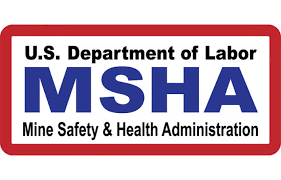 By Steve Fiscor, Editor
By Steve Fiscor, Editor
The U.S. Mine Safety and Health Administration (MSHA) wants to amend current federal standards to reduce exposure to respirable crystalline silica, or silica dust, for metal-nonmetal and coal mines. The agency said the proposed rule change will ensure miners have at least the same level of protection as workers in other industries.
The proposed rule would lower the Permissible Exposure Limit (PEL) to silica dust from 100 micrograms per cubic meter (μg/m3) to 50 μg/m3 of air for a full shift, calculated as an 8-hour time-weighted average. If a miner’s exposure exceeds the limit, the proposed rule would require operators to take immediate corrective actions to come into compliance.
“The purpose of this proposed rule is simple: prevent more miners from suffering from debilitating and deadly occupational illnesses by reducing their exposure to silica dust,” said MSHA Administrator Chris Williamson. “Silica overexposures have a real-life impact on a miner’s health. Miners like a crusher operator at a California sand and gravel mine or a roof bolter in a West Virginia coal mine should never be forced to choose between preserving their health and providing for themselves and their families. This proposed rule furthers the Mine Act’s clear instruction to prioritize miners’ health.”
In addition to reducing the existing PEL, the proposal also includes other requirements to protect miners’ health — such as exposure sampling — and medical surveillance.
The proposal is more than 466 pages and compliance could be a challenge. As an example, mine operators would be required to install, use, and maintain “feasible” engineering and administrative controls to reduce the PEL. Under the proposed rule, respiratory protection would only be allowed for temporary, non-routine use.
There are some areas where the proposal needs to be improved, explained Michael Johnson, president and CEO of the National Stone, Sand and Gravel Association. “We are disappointed to see that the rule does not include a ‘Table 1,’ similar to OSHA’s silica standard for construction,” Johnson said. “We also disagree with the inclusion of an action level of 25 [μg/m3].”
Following the proposed rule’s publication in the Federal Register, MSHA will announce dates for upcoming public hearings in Arlington, Virginia, and Denver, Colorado. The hearings will be open for in-person or online participation.

